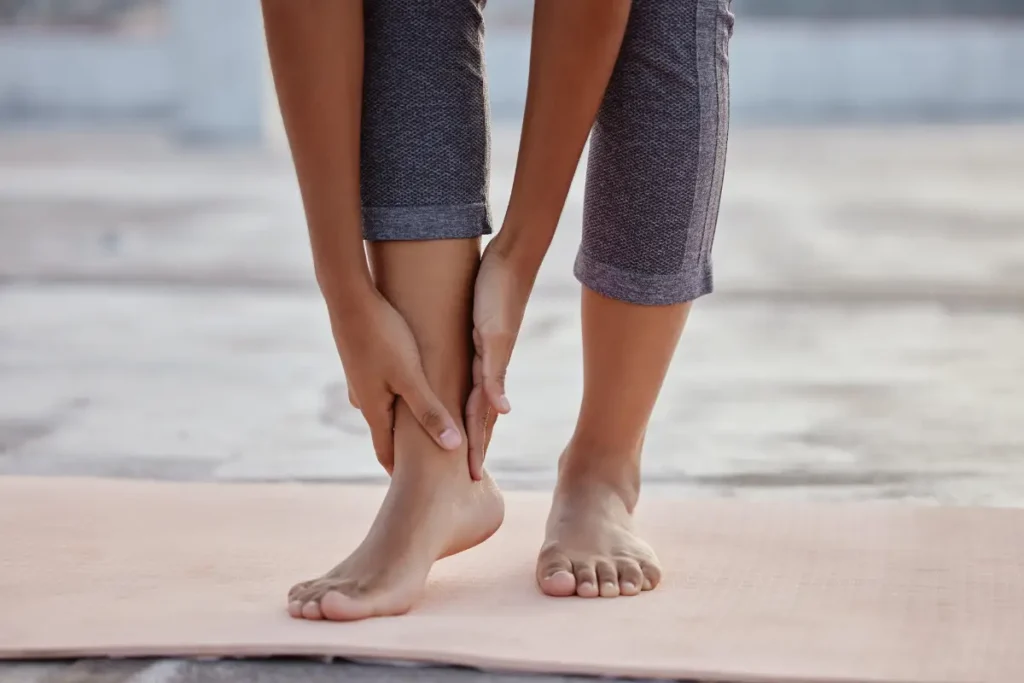Ankle and foot pain can have a big impact on day-to-day life, affecting how far you can walk, how much you can exercise, even what shoes you can wear. This week I will highlight some potential causes for ankle and foot pain:
Potential causes:
Previous ankle injury: ankle sprains are often underestimated and mistreated. Often I see people who have had a fall off a pavement, a bad tackle in football or slipped off a ladder, which led to ankle pain and swelling. However, the person has simply iced it, maybe rested for a few days, and got on with life (despite the pain) without seeing anybody about it. This can lead to problems later on with ankle instability if the ankle ligaments or tendons have been damaged.
Bad shoes: many jobs and social occasions require a certain type of footwear to be worn for hours on end. A sudden change in footwear can lead to problems (e.g. wearing heels for a wedding if you usually live in trainers). Also often wearing shoes which offer minimal ankle or arch support, have a very hard sole or are just uncomfortable. Good shoes are important.
Muscle imbalances: muscle imbalances at your ankles, knees, hips and even your lower back can lead to foot and ankle issues. Our bodies move like a chain and the mobility and support at one joint will influence what happens elsewhere. It is important to have a regular exercise routine involving strength and flexibility exercises to prevent these issues occurring.
How to recover from foot and ankle pain:
There are many causes of foot and ankle pain, however, treatments are often similar and these strategies can help to reduce your pain and improve the movement in your foot and ankle.
Foot rolling – if you have pain in the underneath of your foot or your heel, rolling a tennis ball, or bottle of ice water across this area for 1-3 minutes 3x per day to help to relieve the pain and reduce any restrictions in your plantar fascia – the connective tissue underneath your foot.
Improve your balance – previous ankle sprains can lead to ankle instability, recurrent injuries and altered ankle and foot mechanics. Improving your balance can help to resolve this. Practice standing on one leg at a time for a minute, if this becomes easy try it while standing on a cushion, and then try it with your eyes closed.
Stretching – daily stretches for your calf and toes will improve ankle mobility and can reduce pain.
- Start by standing in a long lunge position with your front knee bent, back leg straight, keep your back heel down on the floor and lean forward with weight on the front leg to stretch the calf muscle in the back leg. Hold for 3 seconds each side.
- Sit on a chair with one leg crossed over the other so your left foot rests on your right knee. Pull your left foot back from the toes to feel a stretch in the sole of your foot. Hold for 30 seconds each side.
Supportive shoes and insoles – wearing good supportive shoes if you are on your feet for more than an hour is important to reduce foot and ankle pain. Look for shoes with good support around the ankle and heel, with a soft sole and some light support in the arch. If you have to wear a specific shoe for work, consider soft insoles with some arch support to reduce pain. If off the counter insoles or these strategies don’t help, see a podiatrist or physiotherapist for advice.


